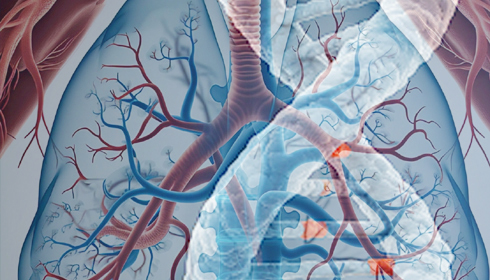
Faulty Lung Gene Far More Common Than Expected, Says Cambridge Study
A new study from the University of Cambridge has found that a defective gene linked to lung collapse and other health issues is much more widespread than earlier believed. Published in the peer-reviewed journal Thorax, the research shows that around one in every 3,000 people carries a mutation in the FLCN gene, which can cause Birt-Hogg-Dubé (BHD) syndrome. This is a dramatic shift from previous estimates, which suggested the mutation affected only one in 200,000 people.
A gene is a segment of DNA that carries instructions for how the body functions. A mutation is a permanent change in the gene's DNA sequence, and it can sometimes disrupt normal function. In the case of the FLCN gene, the mutation can cause BHD syndrome, a rare inherited disorder that leads to non-cancerous skin growths, lung cysts, and a higher risk of kidney cancer.
Until now, little was known about how often this mutation occurs or what it means for people who carry it but show no obvious symptoms. To answer this question, the Cambridge team analysed genetic data from over 550,000 people across three major databases: the UK Biobank, the 100,000 Genomes Project, and East London Genes & Health. They found that carriers of the FLCN mutation—also called silent carriers—are far more common than previously thought.
A silent carrier is someone who has the genetic mutation but does not display the full symptoms of the disease. These individuals may still be at some risk, but it is much lower than in people formally diagnosed with BHD syndrome.
For example, while diagnosed BHD patients have a 37% lifetime risk of spontaneous pneumothorax (a collapsed lung), the risk drops to 28% in silent carriers. Similarly, the risk of developing kidney cancer falls from 32% in diagnosed patients to just 1% among carriers without symptoms.
Pneumothorax occurs when air escapes into the space between the lungs and chest wall, causing the lung to deflate. It often affects tall, thin young men and may resolve on its own. But when older patients experience this condition without an obvious cause, doctors are encouraged to consider genetic conditions like BHD. These can often be detected by identifying distinctive lung cysts on imaging scans.
Professor Stefan Marciniak, the lead researcher and consultant at Royal Papworth Hospital, stressed the importance of early detection. “If an individual has Birt-Hogg-Dubé syndrome, then it’s critical that we diagnose it, because they and their family members may also be at risk of kidney cancer,” he said.
However, he added that people without other symptoms likely do not need aggressive monitoring. “Unless we see the tell-tale signs of BHD, there's no reason to believe carriers have the same elevated cancer risk.”
The study also suggests that the disease may not be caused by the FLCN mutation alone. The difference in outcomes between diagnosed BHD patients and silent carriers points to other genetic or environmental factors influencing how the disease develops.
This research underscores the power of genomic data to reshape medical understanding. For healthcare providers, it raises key considerations: when to screen, how to interpret genetic findings, and how to counsel patients. Not every mutation needs intervention, but knowing when it does could mean the difference between early treatment and missed diagnosis. As genetic testing becomes part of routine care, such insights will be vital in separating genetic risk from genetic certainty.